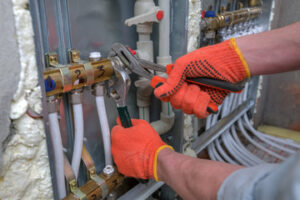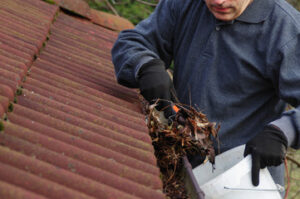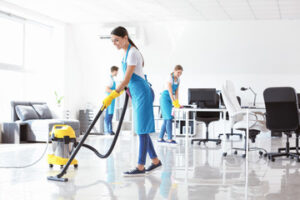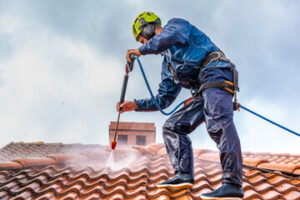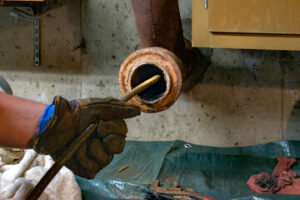Commercial Cleaning Winnipeg focuses on the cleaning of larger spaces, like office buildings and retail stores. Services include dusting, vacuuming, mopping, and sanitizing workspaces and public areas.

Regular commercial cleaning prevents the spread of germs, which reduces employee sickness and absenteeism. It also ensures that high-touch surfaces such as doorknobs and elevator buttons are disinfected regularly.
A clean environment improves worker morale and productivity, which can lead to a positive bottom line. It also helps customers and clients feel more at ease when visiting a business. A cluttered environment, however, can be distracting and frustrating. Fortunately, there are many aspects of a cleaning program that can be streamlined or optimized to cut costs without compromising the level of cleanliness at your facility.
Professional cleaning companies offer a cost-effective solution to keeping your property clean. In addition to reducing labor costs, they use products that are formulated for specific cleaning needs and work around your schedule. This helps minimize the amount of money spent on supplies and reduces waste. Moreover, using green products is an effective way to protect the environment while saving on cleaning expenses.
The key to lowering commercial cleaning costs is having a thorough space analysis and establishing a schedule that aligns with the needs of your facility. This ensures that high-traffic areas are cleaned more often and that infrequently used spaces receive the proper attention they need. Additionally, it eliminates unnecessary spending by reducing the need for supplies like cleaning wipes and paper towels, which are often misused.
Aside from reducing waste, commercial cleaning services also help businesses save on operating costs by increasing efficiency. Regular cleaning extends the lifespan of building materials and delays the need for repairs. Professional cleaning services also provide expert hygiene standards and ensure that your business meets all hygiene regulations.
Running a business is a full-time job that involves managing rising rent prices, payroll expenses, and strict compliance requirements. Handling commercial cleaning in-house requires specialized skills and expensive equipment that may not be available on-demand. Hiring and managing in-house teams can also be expensive, especially when you factor in hiring and training costs, equipment, and supplies. Outsourcing your cleaning needs to a professional commercial cleaning service is a more effective and cost-efficient strategy that will allow you to focus on growing your business.
Healthier Environments
A clean workspace promotes healthy and productive environments. It helps eliminate allergens and pollutants, allowing employees to breathe easier. It helps prevent health problems like respiratory issues, colds, and flu. It also reduces absenteeism. When workers feel comfortable and healthy at work, they are more likely to show up on time, stay at work longer, and be more productive.
Moreover, a clean environment creates a positive working atmosphere and reflects a people-focused company culture. Clean bathrooms, kitchens, and common areas encourage collaboration and a sense of community. A neat and organized workplace enables a focused and calm energy, which makes the space welcoming and motivating for everyone.
Germs can spread quickly from one person to another, causing illnesses and leading to high levels of absenteeism. Commercial cleaning services help minimize sick days by regularly disinfecting surfaces and equipment, including doorknobs, elevator buttons, handrails, and copy machines. They can also wipe down office furniture, sweep and mop floors, vacuum carpeting, and wash and disinfect restrooms.
Cleaner environments are healthier for both staff and visitors, making them more likely to stay and come back. In addition to regular cleaning and sanitizing, cleaning service providers can teach staff about the importance of following safety protocols and washing their hands. They can also use surface imaging technology to identify and target contamination.
Green cleaning methods make financial sense for businesses, too. They help reduce costs by lowering the use of cleaning solvents and minimizing wear and tear on surfaces. They can also save on waste removal and disposal costs by reducing the amount of single-use items such as towels and rags. Refillable containers and reusable tools further cut down on waste and eliminate the need for constant restocking.
With more emphasis placed on upholding hygiene standards in the workplace, it is essential to find cost-effective cleaning solutions. Commercial cleaning services provide a range of benefits that can help keep the workplace clean and safe for both staff and visitors, while helping businesses stay competitive. Contact Dreams Innovation to learn more about our innovative cleaning solutions and how they can improve your business.
Aesthetics
Commercial cleaning involves specialized tasks that are tailored to the needs of businesses. These tasks may include deep cleaning floors, sanitizing bathrooms, washing windows, and ensuring communal spaces are free of allergens and pollutants. Unlike residential cleaning, these services are designed to improve the aesthetics of a business’s facility and reflect a positive image of the company.
In a competitive landscape, first impressions are crucial. Prioritizing commercial cleaning can help a company cultivate a positive reputation and attract clients from the moment they step foot in the door.
Cleaner windows can enhance a building’s overall appearance and allow natural light to filter into the workspace. Professional cleaners use a variety of tools and techniques to remove streaks, smudges, and dust from window glass and frames. They also pay special attention to the sills and tracks, ensuring every inch of a window is spotless. Creating a pristine environment is not only aesthetically pleasing, but it contributes to employee morale and productivity.
Time-Saving
Having commercial cleaning services take care of your business’s cleanliness needs saves you time. You and your employees already have many responsibilities to tend to on a daily basis. Adding cleaning to that list can quickly derail your workflow and create more stress in the workplace. Commercial cleaners work around your schedule and use advanced equipment to efficiently clean your space.
A clean, professional-looking business gives clients a positive first impression and increases their trust in your company. This can lead to more customers, which in turn can make your business grow faster. Trying to do all of the cleaning in-house without professional help may also cause your workspace to become disorganized and dirty, shortening the life of your furniture and equipment.
When clients come to your workplace, they expect to see spotless floors and sanitized surfaces. A messy, disorganized office can give them the impression that your company doesn’t have high standards for quality. Commercial cleaning services ensure that your workplace is always presentation-ready to boost your business’ reputation.
Increased productivity
Research shows a clear link between cleanliness and employee morale. When an environment is cluttered and dirty, employees become less productive and are more likely to call in sick, which can cost your business money. Using professional cleaning services can reduce the number of sick days taken by your employees and keep your work environment free from germs and pollutants that can cause sickness.
A cleaner work environment can also help you meet regulatory requirements. Whether it is for food safety, fire safety, or other protocols, professional cleaners can help you keep up with your required cleaning standards. This ensures that your employees’ health and safety are protected, and your clients’ experience is a good one.
Hiring professional cleaners can be a smart financial decision for your business. By saving you time and money on cleaning supplies, they can allow you to focus more on your business and help it grow. They can also prevent the buildup of dust and dirt, which can clog air vents and result in a decrease in air quality that could lead to health issues for your employees.

